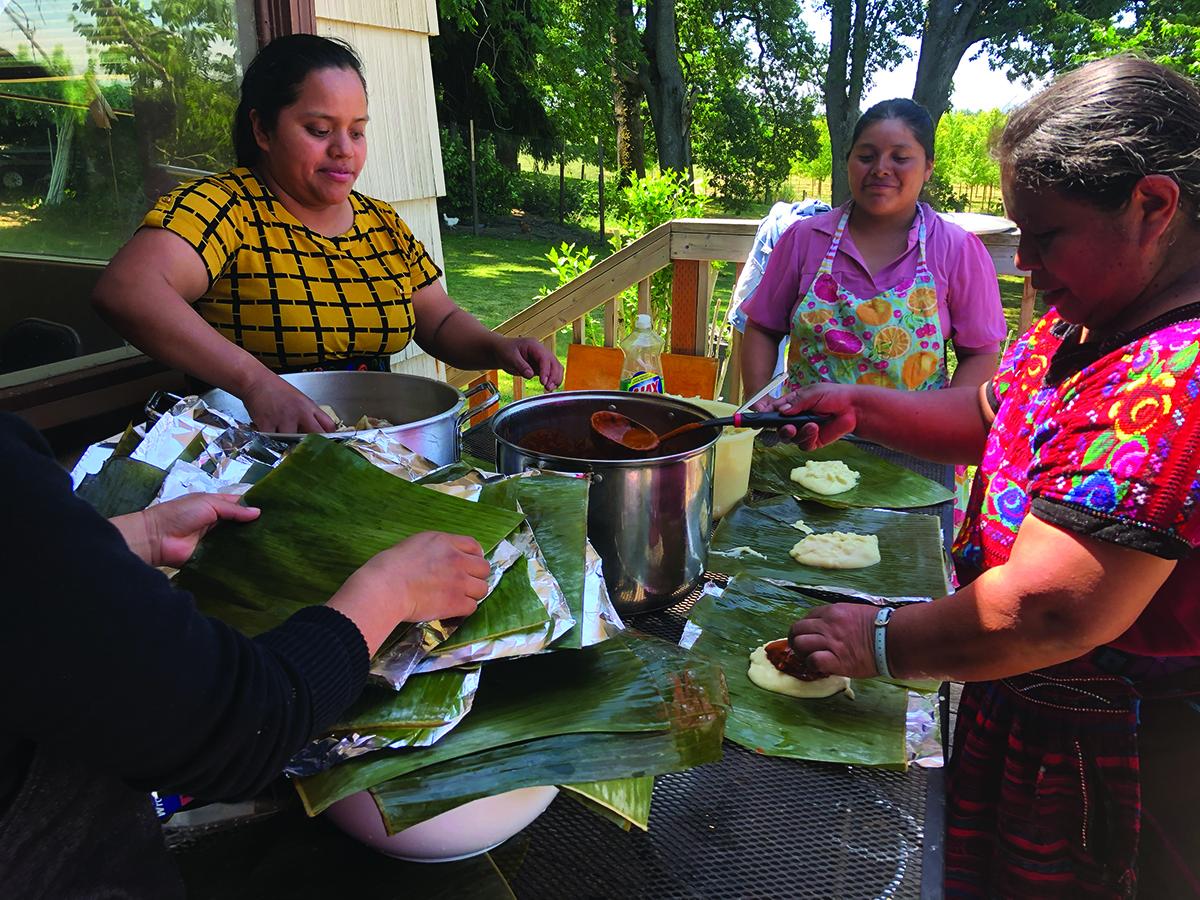
By Liesl Cohn De León, PhD Student, Department of Anthropology
The Guatemalan migrant population in the United States has been growing in the last few decades. Although Guatemalans started coming to the US in the 1980s during the Guatemalan Civil War (1960–1996), between 2010 and 2020 the Guatemalan population increased by about 60%.1 According to the 2020 Census, about 1,683,093 Guatemalans live in the United States. However, there are estimates2 of at least 3,256,047 people from Guatemala living in the US.
Unfortunately, there is no good data on Guatemalan Mayas in the US because, most of the time, they are mislabeled as “Hispanic.” Nevertheless, it is known that the Guatemalan Maya have settled through transborder communities—multi-generational networks connecting established communities in the US with home communities in Guatemala3 in search of a life away from violence, insecurity, lack of opportunities, and low wages. Maya women specifically come to reunite with their families, escape domestic violence, or be more independent, and most of them request asylum and have refugee status.
In the last decade, many Guatemalan Maya migrants have settled in Oregon towns due to the high supply of agricultural work, the fishing industry, and their proximity to areas where the salal plant and mushrooms are located. Women particularly work picking berries and salal, cleaning houses, and working in restaurants. A diversity of Guatemalan Mayan groups live in Oregon, the majority being Mam, Q’anjob’al, Akateko, and K’iche.
Some consider Maya Guatemalans throughout the country to be confronted with the pressure to adapt to an environment that is predominantly Latino/Hispanic.4 However, while non-Indigenous Guatemalans prefer to migrate to large cities to mingle with other Latinos, Guatemalan Mayans prefer to migrate to small cities or rural towns in search of ethnic and linguistic connections mimicking their places of origin.5
During my explorative research, I wondered how Maya migrant women of different generations and places of origin reconstitute their communities and collective and individual identities in Oregon, and how memory has survived, changed, and fractured through migration. I collected 20 oral histories of Maya migrant women and men living in Oregon (Newport and Corvallis)—14 women and six men, most of them Mam, and some Popti’ and Akateko, between 18 and 49 years old. I also made observations in Woodburn, Cottage Grove, Beaverton, and Hillsboro.
I found that Mayas build a sense of belonging by maintaining their agricultural habits, or by seeking to join evangelical churches where the pastor is from their town and speaks the same language. Also, I found that they have established several local committees to collect money when there is an emergency, to transport the dead back to Guatemala, to count the community members, to drive in groups to the nearest Guatemalan consulate, or to organize cultural activities such as parades. Also, they open and frequent Guatemalan stores selling Guatemalan brands, textiles, and traditional products such as seeds and herbs for teas, broths, and natural medicine.
Communal practices are strategies that Maya men and women use to manage, self-regulate, and defend their culture and territories daily. These constantly updated communal practices use memories that emanate from the long memory of rebellions and uprisings organized by past generations.6 Even ordinary daily activities are a way of resistance and preservation of the collective memory. While Maya men focus on work and providing for their families, Maya women continue to practice their ancestral traditions at home and pass them on to their children, particularly teaching them their language to communicate with their grandparents. Also, women play an essential role in these communal spaces because they are on the front lines of family and communal activities, continuing the centuries-long tradition of weaving and preparing the feasts served at ceremonies, parties, and burials. The Maya people have a strong sense of identity and rootedness in their local communities. The establishment of borders has affected their lives, but these communities have remained deeply interconnected, with exchanges occurring fluidly in both trade and kinship7 and the frequent use of social media.
All the people I talked to came from a background of extreme poverty. They went to school only until 6th grade, and when they were children, they used to work in the fields, shepherding, or weaving to help their parents. Most women traveled alone or with a young child to reunite with their husbands or relatives. All of them crossed the Mexico–US border through the desert. Many said the journey was difficult. Most people came to escape poverty, but some also mentioned violence—robberies and gangs. Hence, Maya migrant women are the leading producers of history and identities in their communities, which are being built in new territory in a context of complex intersectional relationships challenged by trauma, structural racism, poverty, gender violence, postwar violence, and labor exploitation.
— Liesl Cohn De León received a 2024 CSWS Graduate Student Research Grant for this project.
NOTES
1 Hernández, Oswaldo. “Dónde están, cuántos y quiénes son los guatemaltecos en EE.UU.” Revista No-Ficción. March 22 (2024), no-ficcion.com.
2 Tzul Tzul, Gladys. “Analyzing the Border Through an Indigenous Lens.” The Funambulist, No. 56. Bulldozer Politics November–December (2024): 16–19.
3 Stephen, Lynn. Transborder Lives. Indigenous Oaxacans in Mexico, California, and Oregon (Duke University Press, 2007).
4 Batz, Giovanni. “Maya Cultural Resistance in Los Angeles. The Recovery of Identity and Culture among Maya Youth.” Latin American Perspectives. Issue 196, Vol. 41, No. 3 (2014): 194–207.
5 Solares, Pedro. “Ciudades Espejo.” Prensa Libre, 4 August (2016), https://www.prensalibre.com.
6 Tzul Tzul, Gladys. “Rebuilding Communal Life. Ixil Women and the Desire for Life in Guatemala.” NACLA-Report on the Americas. Vol. 50, No. 4 (2018): 404–406.
7 Tzul Tzul, Gladys. “Analyzing the Border Through and Indigenous Lens.” The Funambulist, No. 56. Bulldozer Politics November–December (2024): 16–19.

